Tortoises are lovely creatures of the wild. Some people have domesticated and kept them as pets;…
Alligator Snapping Turtle Facts
Do you own an alligator snapping turtle, or are you hoping to get one? There are some facts about them, including handling and taking care of them, that you may want to know. Today, we are going to find out most if not everything you should have in mind.
This breed consists of turtles of up to 220 lbs. in weight, with pyramid-like spikes in long, dark rows. They mostly live in the Apalachicola Rivers and the southeastern United States rivers. They were once dominant around Florida, eastern Texas, southeast Iowa, and the Panhandle.
Most of them were harvested for their meat, making them lose more than their homes and endangering their species in several United States areas. Many like to keep them as pets for a variety of reasons. They are, however, enormous and will need a space that can home them comfortably.
When you keep a turtle as a pet, you will often need to think about its size. Some take time to grow, but comfort becomes essential for easy movement, recreation, and even resting when they do. The same case is true for an alligator snapping turtle.
Therefore, if you have a low-sided tank in which you intend to keep your youth alligator snapping turtle, then you may want to think about something that can accommodate their adult size—they grow. Another factor that you may not get right with an aquarium is temperature.
Turtles need proper temperature regulation; their healths depend on how well you ensure that their preferred conditions are met. You will, therefore, find outdoor enclosures to be more suitable places to keep your pet. If you have a greenhouse or anything more extensive, you will be one step in the right direction.
With proper care, these turtles can live for between 20 and 70 years. When left free in the wild, however, they can go up to 200 years. Therefore, if you are going to keep them, it would be good to provide them with the best conditions that they can get in the wild, though some may not be possible.
How to care for your turtle could be your next primary concern. Why don’t we find out more that will enable you to provide the best you can?
They are reptiles
These turtles are reptiles; like their kind, they are cold-blooded—their body temperatures change with their surroundings. Reptiles, however, require plenty of basking for good health and survival. Keeping them indoors would thus not be a good idea.
While some owners can find a way to regulate an indoor enclosure temperature and even provide UV lighting, size becomes another factor. Since they grow to be enormous, outdoor housing would do—besides a greenhouse, you can use anything spacious enough with subtropical conditions.
They are turtles
Snappers are also turtles and have similar features—their bodies are covered in an upper shell and an underside shell, a fusion of its backbone and ribs. A bridge connects the shells, which have horny plates for protection and come atop three rows of spiked ridges.
As you would expect of a turtle, they also are suited for feeding with their tongues and have beake-like mouths. They do well on the food they can lure and catch, so they mostly hunt fish when in water, where they spend most of their time.
Common snapper vs. Alligator snapper
What sets apart a common snapping turtle from an alligator snapping turtle? You may first notice that their shells are different. A common snapper has three distinctive keels of spikes on its shell. An alligator snapper, on the other hand, is shorter and has several spiky tubercles.
You may also find an alligator snapper’s tail to be longer and its head more triangular. It has fleshy eyelashes around its eyes, which you will find to be more on its sides.
Sex
To determine a snapper’s sex, you will have to locate the cloaca, an opening to its digestive, urinary, and genital tracts—for males, it extends out of their shells, while you may not note the same with a female. You will also find males to have thicker tails compared to females.
Behavior
Does the name make you imagine some snapping? Perhaps aggression? These turtles are not so—their hunting game is patience as they lie in the water with little to no movement. They will often have their tongues out and lure fish due to their pink color and resemblance to a burrowing worm.
You may also note that these turtles hunt at night when in the wild but can switch to any time of day or night when kept as pets. However, they keep much activity within the waters, where they can stay for long and come out only a few times to bask or nest.
A healthy snapper
A healthy turtle will often do well with proper care. One that has not had their best, however, could experience issues regardless of what you do. Remember that they are endangered and are thus protected by the law—to get one, your option could be online.
Local wildlife authorities may be interested in your acquisition, so should you get your snapper from a trusted individual or breeders, you may want to hold your proof of purchase. Also, please take a look at your pet and ensure they are healthy.
So, what should you check? Their environment is essential information that you should have. Find out, whenever you can, about their breeding and development. Also, ensure they are not overcrowded and that the water they use looks clean. Check their activity and whether they are mixed among other species.
The law prohibits keeping snappers of less than four inches as pets. Smaller snappers are not as easy to handle and may require more maturity. It is not advisable, therefore, to get hatchlings, despite any loopholes that could be in the law, such as allowing their sale for “bona fide scientific, educational, or exhibition purposes, other than use as pets.”
Examination
A physical examination of your turtle’s entire body is the next thing you may want to do to enable you to provide the best conditions. During your examination, something to keep in mind is that a mature snapper can dig into you with its finger-length claws and can do more harm to your fingers or toes with its beaks.
Their adults also tend to be large and thus more challenging to inspect. If you are experienced in handling snappers, then checking them should be easy and safe. If, however, you are doing it for the first time or are not well-versed with the process, then you can let an expert or owner help out.
A small snapper is relatively easier to handle and check; you can take them by the sides. If you are going to check an adult, you can take them by the shell in front of the tail and behind the head—remember to handle their beaks with care and watch that they do not bite.
Generally, a sick snapper may not have much weight or at all be alert. Even though they naturally calm and may not show much activity when handled, you should notice an initial active response; failure should cause concern of a possible issue.
Something else to check is the turtle’s underside and top shell. If the snapper exhibits discolorations, then they could have a shell rot. Also, check for any wounds—a closed one could be in the healing process; an open wound, however, will need to get checked.
As you head home with your snapper, provide them a suitable ride and environment in the container they will be in. Ensure that they have proper ventilation and have a lid covering the box or enclosure. Temperature is something else to check and ensure you get right.
Turtles do well with proper temperature regulation. Snappers, therefore, may need some warmth in their containers should the environment get cold—a ventilated Styrofoam box could do for double insulation, with some heating pads. Adults, which can be large, may require something better.
Care
If you are a first-time turtle owner, you may, sadly, not find an alligator snapper to be the best pet for you. They come in large sizes that are a heavy task to manage. When they are juveniles, you can keep them in a tank. They will, however, outgrow it.
Every year, their sizes go up by an inch to two. They get to a foot eventually and will then have to move to a larger space. If you have a pond, it would be great; if a water trough is instead available, it can also do. A task that then comes upon you is cleanliness—ensure the trough, pond, and waters remain clean.
How do you ensure the water remains clean? Remember that snappers get some constantly moving fresh water in the wild, taking away dirt and bringing in more clean water. You will notice that these turtles produce plenty of waste and can make messes of their meals.
Proper filtration will help ensure they get a freshwater supply, but that is not all you should watch with their habitat. Remember that temperature is critical; if your environment is cool, you will have to find a way to heat their tanks and regulate their temperature.
What size of a tank will you need? It will depend on how old the snapper is and, thus, how large. Hatchlings may do well in a tank of 40 gallons. Measures of 36 x 18 x 16 inches for a breeder tank may provide sufficient room, allowing not only your snapper’s comfort but also your ease of access with a pump or heater.
Basking Site
Most turtles not only need but also love to bask. However, snappers are different—you may not see them out of the water often, and perhaps it is due to their aquatic nature; this does not mean they do not come out; they will have to every once in a while.
Therefore, it is a good idea to make them a basking platform that is spacious enough to accommodate their movement and resting. Pond-owners are lucky with the flexibility they get for installing all kinds of features the turtle will love. If you have one, you can think of rocks, logs, and other platforms your turtle will be comfortable on or under.
Fish
For an adequate supply of food, you can serve your snapper with some small minnows, guppies, or rosy reds, provided that your pond’s size can accommodate them. You may want to avoid non-feeder fish due to the copper sulfate treatments that most take on their farms—it could be toxic to your snapper.
Enclosure
A snapper can try to get out of their habitats, and unwanted visitors can also try to creep their way in. It is a good idea to have an enclosure of about two to three times their shell’s length, going up. A chicken wire or overhead net can help keep predators, especially birds, from taking baby snappers.
Diet and feeding
Alligator snappers do not have an entirely different diet from most turtles; they only often depend on what chance presents them. They will, therefore, enjoy algae, duckweed, small mammals, birds, carrion, and anything small enough they can come across in the wild. It is advisable to feed them with the same—you can try out various plants and animals.
Across their ages, they will need to feed every day, provide only sufficient amounts, and ensure that it is nutritious. Since they are not the best at handling food, whatever they will not eat will make their environment dirty. Most turtle-owners feed their pets measures equal to their heads.
Bottom Line
We have discussed not all the care you can provide your snapper, but this is a good place to start for anyone who can handle and manage them. Snappers are not the easiest pets to care for, but you may not stop loving them once you begin.
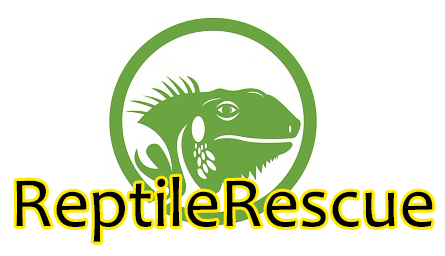
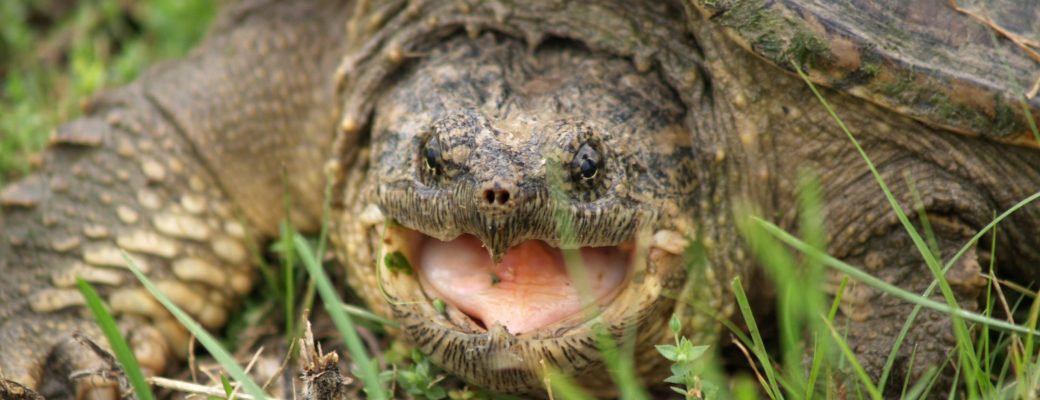
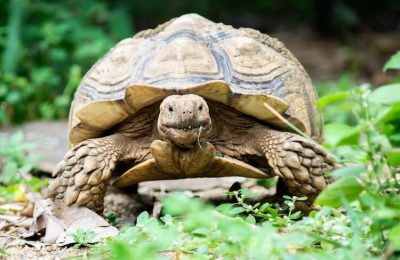
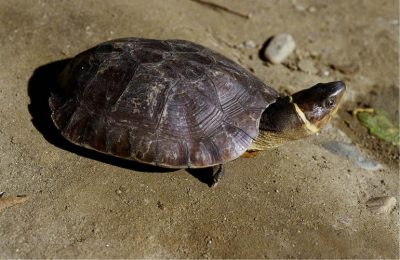
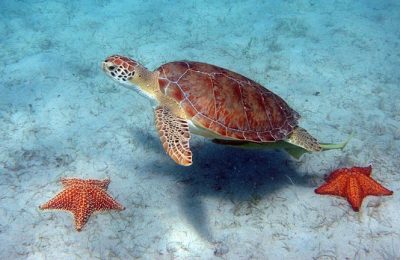
This Post Has 0 Comments